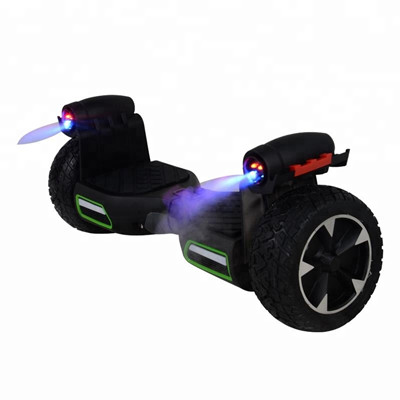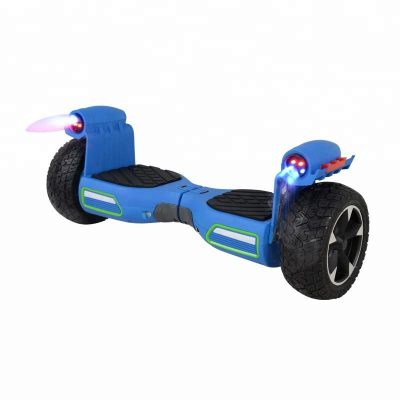Hoverboards, or self-balancing scooters, come in various types and models, each with its own set of features and capabilities. Here are some common types of hoverboards:
- Basic Hoverboards: These are the standard self-balancing scooters with basic features. They are designed for casual riders and offer standard functionality, including self-balancing technology, electric propulsion, and LED lights. Basic hoverboards are suitable for short commutes and recreational use.
- Off-Road Hoverboards: Off-road hoverboards are built with larger and more rugged wheels, making them suitable for riding on various terrains such as grass, gravel, dirt, and uneven surfaces. They often have more powerful motors and enhanced shock absorption to handle rough conditions.
- All-Terrain Hoverboards: Similar to off-road hoverboards, all-terrain models are designed to handle a variety of surfaces. They come with features like robust tires, increased ground clearance, and sturdy construction. All-terrain hoverboards are versatile and can handle both urban and outdoor environments.
- Hoverboard with App Integration: Some hoverboards can be connected to smartphone apps via Bluetooth. These apps allow riders to monitor battery life, speed, and distance traveled. They might also offer customizable riding modes and settings.
- Hoverboard with Speakers: Certain hoverboards come with built-in speakers that can connect to a smartphone or other devices via Bluetooth. Riders can listen to music while cruising on their hoverboards.
- Futuristic Designs: Some hoverboards are designed with a futuristic aesthetic, incorporating unique shapes, LED lighting patterns, and vibrant colors. These models focus on style and aesthetics, often appealing to younger riders.
- Foldable Hoverboards: Foldable hoverboards are designed to be more portable and convenient for storage and transportation. They typically have a collapsible handle or mechanism that makes them easier to carry when not in use.
- Hoverboard with Extended Battery Life: While most hoverboards offer a range of a few miles on a single charge, some models come with extended battery life, allowing riders to travel longer distances before needing to recharge.
- Hoverboard with Swappable Batteries: Certain high-end models feature swappable batteries, which means you can carry spare batteries and quickly replace them to extend your riding range without waiting for a recharge.
- UL-Certified Hoverboards: Given safety concerns associated with hoverboards, UL-certified models have been tested and certified by Underwriters Laboratories (UL) for meeting safety standards. These models are considered safer options.
- Beginner-Friendly Hoverboards: These hoverboards are designed for riders who are new to self-balancing scooters. They might have features like slower speed modes and enhanced stability to help beginners learn how to ride comfortably.
When choosing a hoverboard, it’s important to consider your intended usage, riding environment, desired features, and safety standards. Always opt for reputable brands and models that adhere to safety regulations and provide clear product specifications. Additionally, read user reviews and seek recommendations to ensure you’re making an informed decision.





























